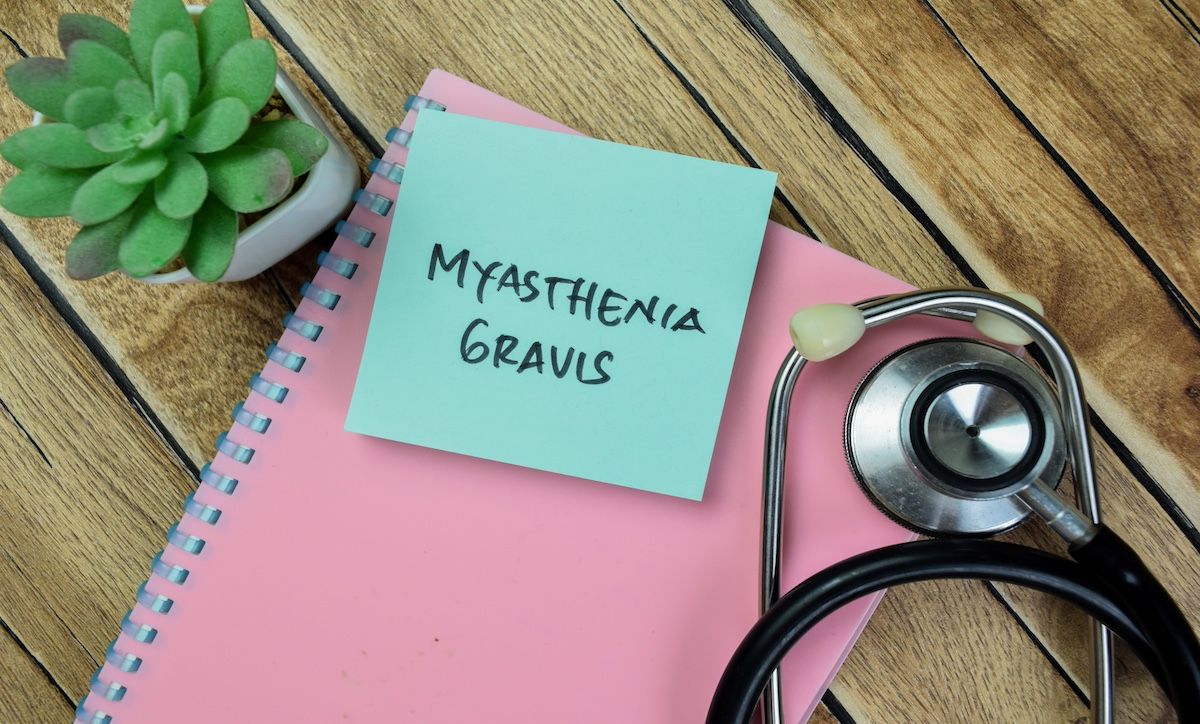
- Center on Health Equity & Access
- Clinical
- Health Care Cost
- Health Care Delivery
- Insurance
- Policy
- Technology
- Value-Based Care
Patient With MG-Related Ptosis Successfully Treated With Nasal Spray Duo
Although further research is needed, these new findings suggest that using the 2 intranasal sprays is an effective option for patients with myasthenia gravis (MG) who experience eyelid drooping.
For the first time, data have shown improvements in upper eyelid drooping resulting from myasthenia gravis (MG) following a combination of nasal sprays, a tolerable treatment approach that patients can access over the counter. Although further research is needed, these new insights suggest that using the 2 intranasal sprays is an effective option.
In the case report, published in Cureus, researchers shared their findings of a patient whose MG-related ptosis resolved following 3 days of intranasal oxymetazoline hydrochloride 0.05% (Afrin) followed by several days of intranasal flunisolide (Nasalide).1
Sequential use of 2 sprays left the researchers unable to determine which spray contributed more to symptom resolution. | Image Credit: © syahrir - stock.adobe.com

“This case is particularly noteworthy due to the rapid relief and ease of application, suggesting these treatments as potential alternatives or adjuncts in MG management,” wrote the researchers, noting that current treatments, including prolonged immunosuppressive therapy and pyridostigmine, carry significant adverse effects. “Further studies with larger patient populations and controlled settings are necessary to clarify the use of oxymetazoline and flunisolide intranasal sprays for ptosis, specifically in relation to MG, and to explore their mechanism of action, long-term efficacy, and safety profile.”
Use of these 2 sprays was implemented for a 71-year-old woman who presented to the emergency department following 3 weeks of ptosis in the left eye, as well as issues with swallowing. The patient was initially started on 3 sprays of oxymetazoline hydrochloride 0.05% per nostril followed by 2 sprays per nostril twice daily before stopping on the third day to alleviate rebound congestions. She then was given 2 sprays of flunisolide per nostril twice daily for 7 days. Between treatments, the patient received nasogastric tube insertion due to dysphagia.
Symptoms resolved on the fifth day, with complete resolution of the ptosis, and on the seventh day, the tube was removed with complete resolution of dysphagia. The group noted that sequential use of these 2 sprays left them unable to determine which spray contributed more to symptom resolution.
In 2020, the FDA greenlit the eye drop solution of oxymetazoline (Upneeq) for blepharoptosis after 2 phase 3 trials found that patients randomized to receive the treatment for 6 weeks showed significant visual-related improvements. A pooled analysis of the 2 studies showed that oxymetazoline 0.1% yielded improvements in superior visual field and upper eyelid elevation on day 1 and day 14.2 Patients with MG were excluded from the study, although some reports have characterized the efficacy of the eye drop formulation in patients with MG-related ptosis. However, this new case study is the first to report on the intranasal formulation in this setting.1
The group noted that there remain unknowns about the mechanisms underlying the relief of ocular symptoms from intranasal sprays.
“Although significant absorption through the nasolacrimal system is unlikely due to gravity, the upward force exerted by spray bottles and some retrograde flow via nasolacrimal cilia may make it plausible,” wrote the researchers. “Another possibility lies in the therapeutic benefits of systemic absorption, likely due to vasoconstrictive effects improving muscle tone. It is crucial to acknowledge that there have been only transient side effects of flunisolide such as nasal stinging and throat irritation. Considering the systemic absorption of lipophilic drugs like oxymetazoline, potential adverse effects include increased nasal congestion, impaired vision, fast or irregular heartbeat, hypertension, and dizziness.”
References
1. Aloyan T, Shilleh N, Sharma A, Barsamian B, Sovory L. A breath of relief: oxymetazoline and flunisolide nasal spray in the management of myasthenia gravis ptosis. Cureus. 2024;16(4):e58812. doi:10.7759/cureus.58812
2. Slonim C, Foster S, Jaros M, et al. Association of oxymetazoline hydrochloride, 0.1%, solution administration with visual field in acquired ptosis: a pooled analysis of 2 randomized clinical trials. JAMA Opthalmol. 2020;138(11):1168-1175. doi:10.1001/jamaophthalmol.2020.3812
2 Commerce Drive
Cranbury, NJ 08512
AJMC®
All rights reserved.